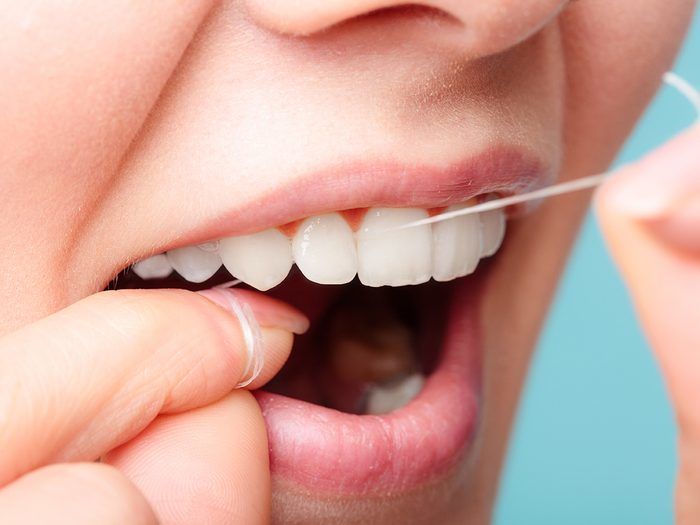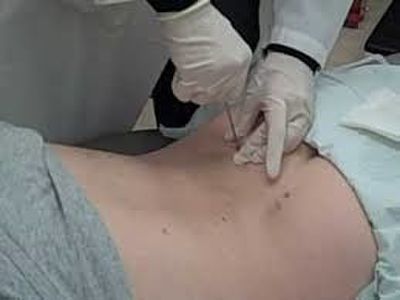
This Is the Right Way to Floss Your Teeth
Most of us brush our teeth at least twice a day, but when it comes to flossing, well, not so much. But that thin piece of thread is one of the best tools we have to maintain our oral health and prevent larger problems from occurring in the future, such as tooth loss, inflamed gums and periodontal disease.
“It’s essential,” says Deborah Stymiest, a dentist in Fredericton and previous president of the Canadian Dental Association. Why? Because brushing doesn’t reach 30 percent of the tooth’s surface and, left unchecked, that plaque can build up and lead to tartar.
Still, despite its importance, flossing is often a hard sell. “People today are in a hurry and may not take the extra time for such personal care,” says Stymiest. Not to mention, most of us aren’t actually doing it properly. But if you learn how to floss the right way and get into the daily habit, your teeth will thank you in the long run.
Flossing basics
Take a piece of floss-about 18 inches long, or roughly the length between the tips of your fingers and your elbow. Leaving about two inches between your hands, wrap the floss around your index and middle fingers on both hands.
Slide the floss in between two teeth, then wrap it around one of the teeth into a C shape around the base; gently slide it under the gum line. Now, wipe the tooth two to three times from base to tip.
Make sure you floss the sides of both teeth-it’s surprising how many of us only do one side. Use a new section of the 18-inch piece of floss for each tooth, as it wears and picks up particles as you use it.
After you’re finished, brush your teeth. Flossing, then brushing, helps prevent tooth decay and gum disease.
Mistakes to avoid
Not flossing enough
You need to floss daily to prevent build-up of the dreaded tartar. And remember, when you first begin to floss, gums can bleed-so don’t let that deter you. Try to floss at night before bed so the plaque between your teeth doesn’t have all night to rest and fester.
Not removing the plaque
A lot of us use floss only to remove food that’s stuck between our teeth. Remember, for floss to be useful, you need to spend the time required to remove plaque: scraping the surface up and down two or three times, moving gently below the gum line, on both sides of each tooth. Having difficulty? Ask your dentist to recommend a type of floss (waxed vs. unwaxed, for example) suitable for your teeth.
Not using enough pressure
It takes some elbow grease to actually clear the tooth of plaque. Press firmly against the tooth, while moving gently and slowly when guiding the floss under the gum line.
Not flossing long enough
Most of us have 28 teeth, which means it should take us about two minutes for decent results. Add in the two to three minutes required for brushing, and it takes about five minutes an evening to ensure you have a set of teeth that can last you a lifetime.











